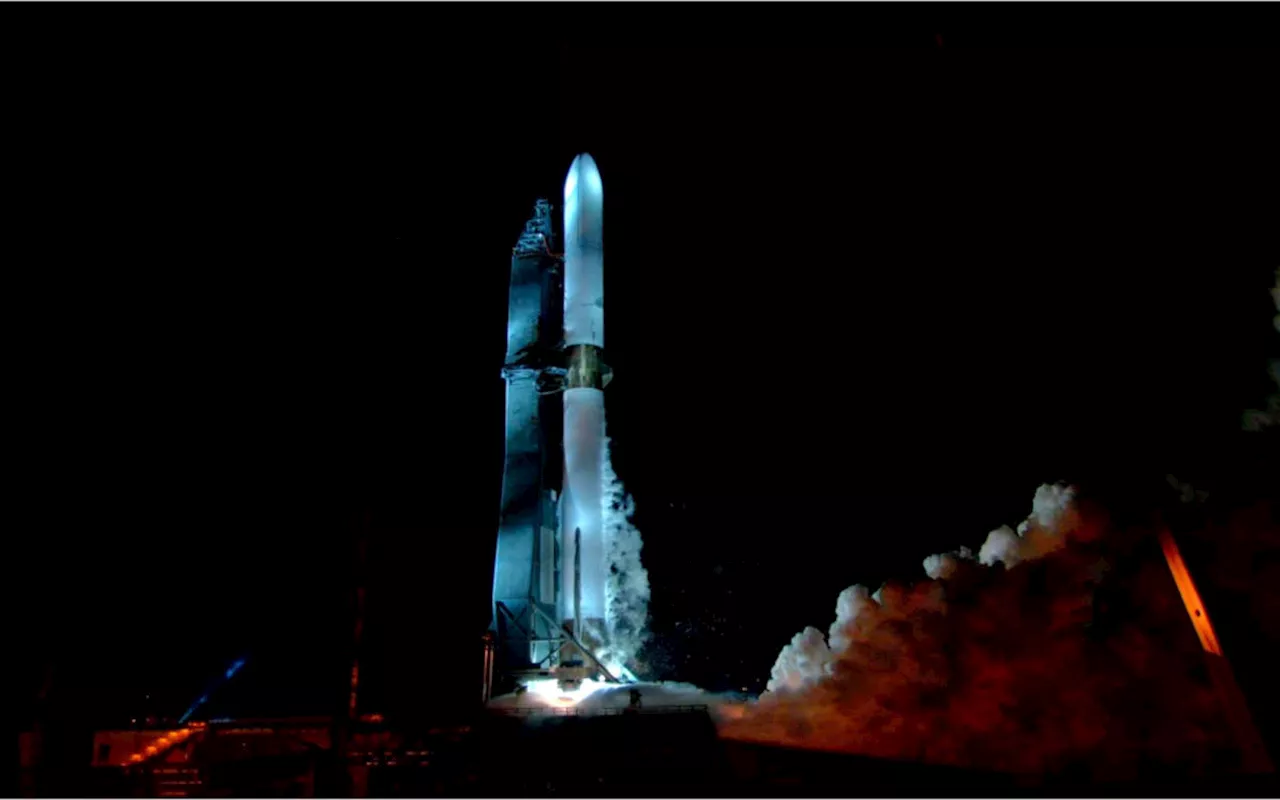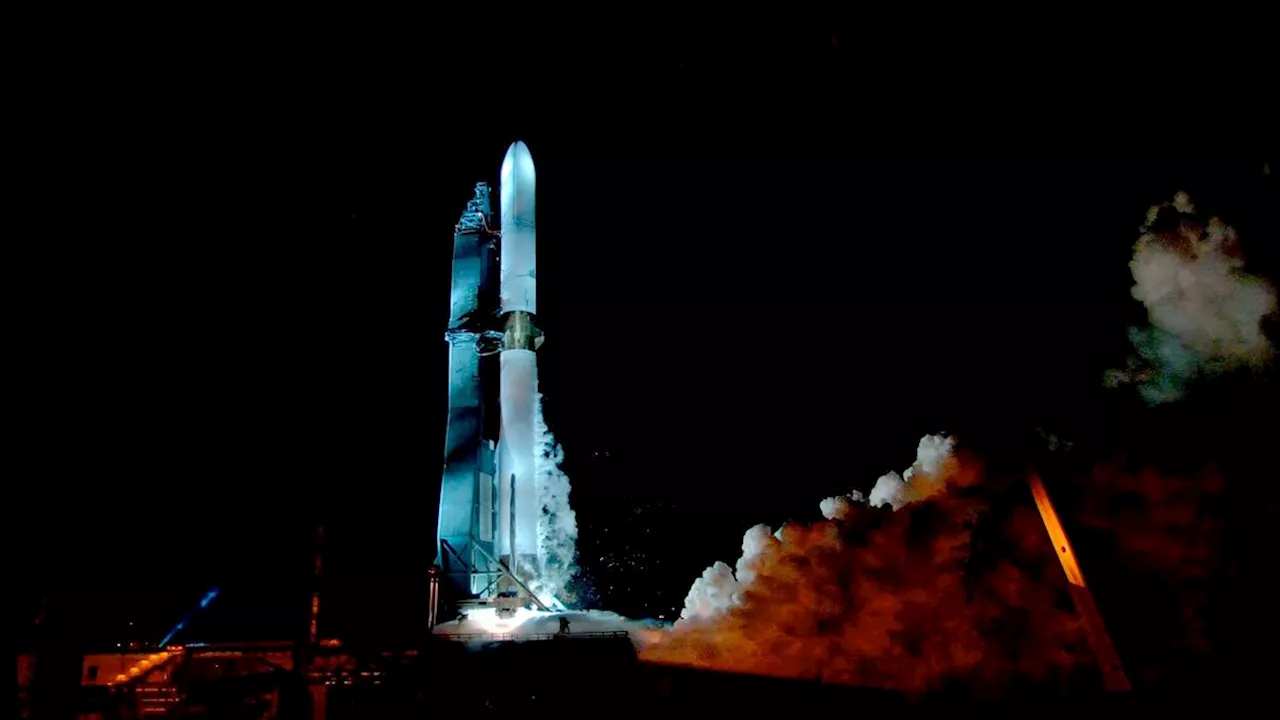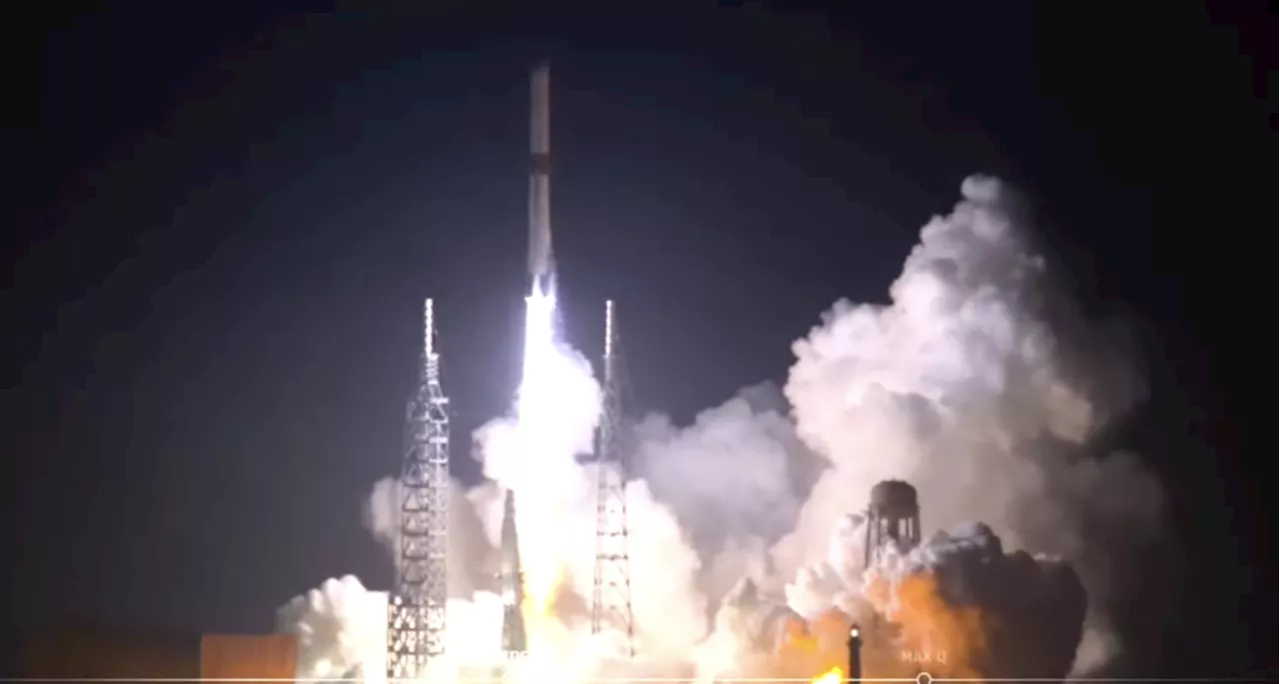Blue Origin celebrates successful first launch of New Glenn rocket, a significant step towards becoming a major player in the launch industry. The rocket successfully delivered the Blue Ring platform to medium-Earth orbit, positioning Blue Origin as a potential competitor to SpaceX.
Blue Origin successfully launched its New Glenn rocket into orbit at 1:03 a.m. CST Thursday, marking a significant milestone for the company and the space industry. The 320-foot-tall rocket soared from the Cape Canaveral Space Force Station in Florida, carrying the company's Blue Ring platform, designed to support and relocate satellites, to medium-Earth orbit.
Although the launch's secondary goal of vertically landing the reusable booster, nicknamed 'So You're Telling Me There's a Chance', was not achieved, Blue Origin CEO Dave Limp expressed pride in the successful orbital debut. 'We knew landing our booster on the first try was an ambitious goal,' Limp stated. 'We'll learn a lot from today and try again at our next launch this spring.' This launch propels Blue Origin from a suborbital space tourism company to a potential major player in the launch industry, challenging SpaceX's dominance in the US space market. The New Glenn's orbital capability positions Blue Origin as a strong contender for government and commercial contracts, potentially impacting NASA's reliance on SpaceX for astronaut transport to the International Space Station.
BLUEORIGIN NEW GLENN SPACE LAUNCH ORBIT COMPETITION SPACEX
United States Latest News, United States Headlines
Similar News:You can also read news stories similar to this one that we have collected from other news sources.
 Blue Origin's New Glenn Rocket Receives FAA Launch LicenseBlue Origin's New Glenn rocket is officially cleared for launch after receiving a commercial space launch license from the FAA. The reusable rocket, designed for multiple missions, will launch from Cape Canaveral Space Force Station.
Blue Origin's New Glenn Rocket Receives FAA Launch LicenseBlue Origin's New Glenn rocket is officially cleared for launch after receiving a commercial space launch license from the FAA. The reusable rocket, designed for multiple missions, will launch from Cape Canaveral Space Force Station.
Read more »
 Blue Origin's New Glenn Rocket Gets FAA Approval for First LaunchBlue Origin's New Glenn rocket is gearing up for its first orbital mission after receiving the necessary clearance from the Federal Aviation Administration (FAA). The launch license, granted for five years, allows the company to conduct missions from Cape Canaveral Space Force Station in Florida.
Blue Origin's New Glenn Rocket Gets FAA Approval for First LaunchBlue Origin's New Glenn rocket is gearing up for its first orbital mission after receiving the necessary clearance from the Federal Aviation Administration (FAA). The launch license, granted for five years, allows the company to conduct missions from Cape Canaveral Space Force Station in Florida.
Read more »
 Blue Origin Successfully Tests New Glenn RocketBlue Origin achieved a significant milestone with the successful test firing of its New Glenn rocket. The test involved igniting and firing all seven engines for 24 seconds, simulating a true launch scenario.
Blue Origin Successfully Tests New Glenn RocketBlue Origin achieved a significant milestone with the successful test firing of its New Glenn rocket. The test involved igniting and firing all seven engines for 24 seconds, simulating a true launch scenario.
Read more »
 Blue Origin Successfully Completes First Hotfire Test of New Glenn RocketBlue Origin conducted a successful 24-second hotfire test of its New Glenn rocket on Friday, Dec. 27, marking a major milestone for the company's upcoming launch. The test involved all seven engines of the rocket firing simultaneously for the first time, demonstrating the vehicle's readiness for its maiden flight.
Blue Origin Successfully Completes First Hotfire Test of New Glenn RocketBlue Origin conducted a successful 24-second hotfire test of its New Glenn rocket on Friday, Dec. 27, marking a major milestone for the company's upcoming launch. The test involved all seven engines of the rocket firing simultaneously for the first time, demonstrating the vehicle's readiness for its maiden flight.
Read more »
 Blue Origin Successfully Completes Hotfire Test for New Glenn RocketBlue Origin has achieved a significant milestone with its New Glenn NG-1 rocket by successfully completing a 24-second hotfire test of its BE-4 engines. This marks the first time the entire fully integrated vehicle, including both stages, was tested alongside ground systems. The test provided engineers with an opportunity to rehearse launch procedures and validate simulation data against real-world scenarios. New Glenn is expected to have its maiden flight in the coming days.
Blue Origin Successfully Completes Hotfire Test for New Glenn RocketBlue Origin has achieved a significant milestone with its New Glenn NG-1 rocket by successfully completing a 24-second hotfire test of its BE-4 engines. This marks the first time the entire fully integrated vehicle, including both stages, was tested alongside ground systems. The test provided engineers with an opportunity to rehearse launch procedures and validate simulation data against real-world scenarios. New Glenn is expected to have its maiden flight in the coming days.
Read more »
 Blue Origin's New Glenn Rocket Completes Successful Hotfire TestBlue Origin successfully conducted a 24-second hotfire test of its New Glenn NG-1 rocket, marking a significant milestone before its anticipated test flight. The entire integrated vehicle, including the first and second stages, was tested alongside ground systems, allowing engineers to rehearse launch procedures and validate simulation data against real-world scenarios. This test follows the successful use of Blue Origin's BE-4 engines on ULA's Vulcan rocket, demonstrating their reliability and ability to compensate for potential issues during flight.
Blue Origin's New Glenn Rocket Completes Successful Hotfire TestBlue Origin successfully conducted a 24-second hotfire test of its New Glenn NG-1 rocket, marking a significant milestone before its anticipated test flight. The entire integrated vehicle, including the first and second stages, was tested alongside ground systems, allowing engineers to rehearse launch procedures and validate simulation data against real-world scenarios. This test follows the successful use of Blue Origin's BE-4 engines on ULA's Vulcan rocket, demonstrating their reliability and ability to compensate for potential issues during flight.
Read more »
